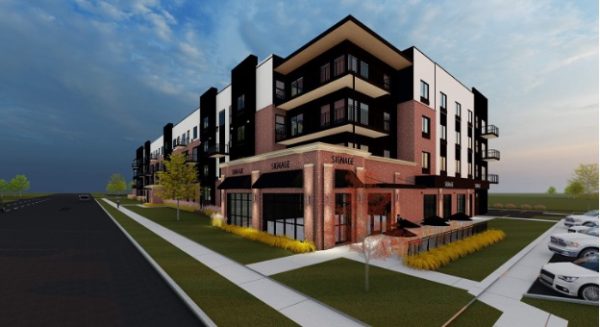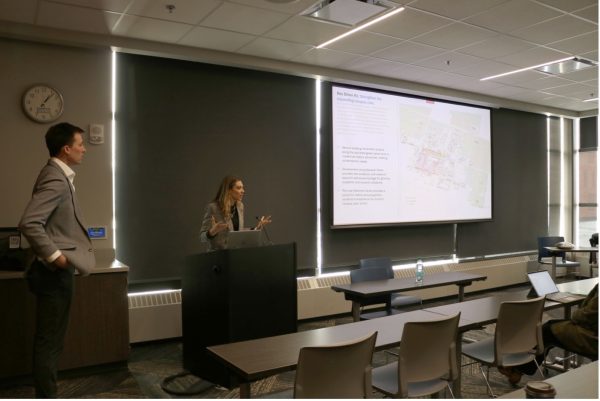No end of snow in sight
February 2, 2010
Meghann Rise
After seeing its all-important shadow, this year’s groundhog confirmed there will be six more weeks of winter.
Much of eastern South Dakota is in the position to break the snowfall record by the end of winter, Mike Gillispie, hydrologist for the National Weather Service in Sioux Falls, said.
This winter ranks eighth in the amount of snow so far for Brookings, Extension State Climatologist Dennis Todey said. However, regarding temperature, Brookings has stayed close to average (measuring from Dec. 1 to the present) at 1.5 degrees above normal. December was the 22nd coldest winter on record for Brookings, but because the week of Jan. 17 had nights that were in the 20s, the average temperature was pulled up from the frigid average of December.
Gillispie said Sioux Falls has seen 35.9 inches of snow, which is 16.2 inches short of the record set in the winter of 1968-69. The average temperature has been 13.5 degrees, which is only about 4 degrees below average.
In a Nov. 4 Collegian article, Gillispie said last summer’s abnormally cold temperatures occurred because of a “fairly slow-moving and persistent pattern that stayed around for most of the summer.” Gillispie said the abnormal summer temperatures would not have a significant effect on the winter weather.
However, Scott Curl, forecast meteorologist for the NOAA National Weather Service, said colder summers can often lead to wetter winters.
“Winter seasons after significantly cool summers tended to be wetter than normal, with 45 percent of the following winters having this characteristic,” said Curl.
Because of the record-breaking amounts of snow thus far, Curl’s prediction could be accurate. This winter has already seen significant amounts of snow, and it’s predicted to get worse.
“We are entering the period of winter that becomes more active,” Todey said. “February and March are peak months for big amounts of snowfall.”
Much of these weather patterns can be attributed to El Niño, which, according to the National Oceanic and Atmospheric Administration, is a disruption of the ocean-atmosphere system in the Tropical Pacific having important consequences for weather and climate around the globe. Another contributing factor is the Arctic Oscillation, which refers to opposing atmospheric pressure patterns in northern middle and high latitudes, according to the National Snow and Ice Data Center (NSIDC). Depending on which phase Arctic Oscillation is in, it can either keep North America in a warmer or colder state.
Much of the predictions for this winter were based on the El Niño that developed in the tropical Pacific Ocean this winter, but the Arctic Oscillation interfered and had significant effects.
“The overall weather patterns that we typically see with El Niño did not set up across the United States this year due to an overwhelming influence of the Arctic Oscillation,” Gillispie said. “With the Arctic Oscillation being so strong and persistent, its effects overwhelmed the El Niño and southeastern United States, which allowed a long period where Arctic air moved through the United States.”
Many students are expecting the worst for the remaining months of winter, based on the patterns seen so far.
“I think this winter has been ridiculous so far,” Miranda Carmon, junior business economics major, said. “I hated being snowed in over Christmas break for an entire week. And then when I finally did try to get out of my house after five days, I went into the ditch right away.”
So what can be expected in the next couple of months?
“The average temperatures for February should end up being near normal to above normal for eastern South Dakota,” Gillispie said. “For the early spring, March temperatures should again, with the northern branch of the jet stream plunging southward well into the southern, be normal to above normal, with normal to below normal temperatures in April.
“Precipitation is expected to be above normal for February and March and below normal in April.”




















